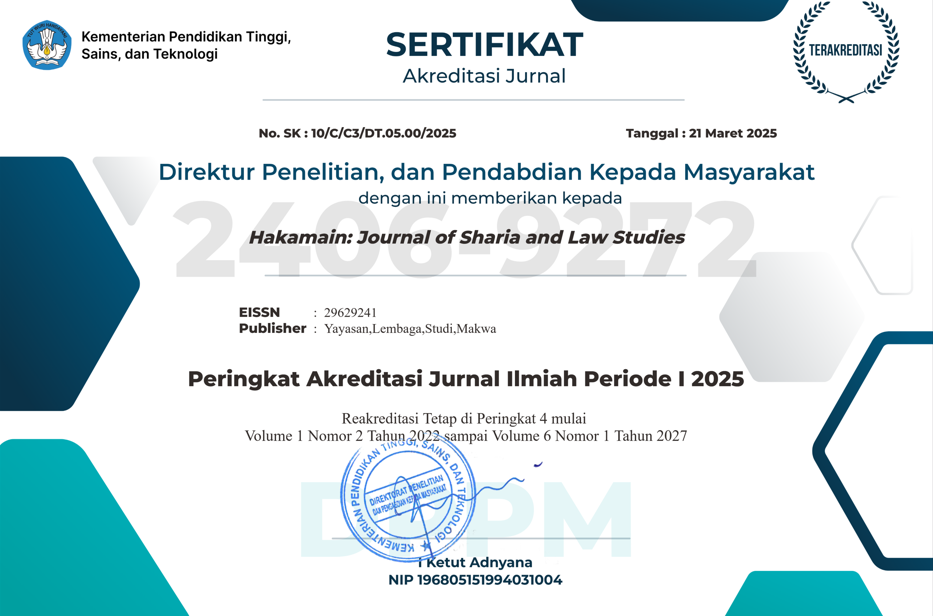The Relationship Between Religious Law and State Law: Analytical Study of Receptio and Electicism Theories
DOI:
https://doi.org/10.57255/hakamain.v2i2.326Keywords:
Eclecticism Theory, Receptio Theory, Religious Law, State LawAbstract
This research delves into the intricate relationship between religious law and state law by examining them through the theoretical frameworks of reception and eclectic theory. Reception theory posits that religious law can exert an influence on state law through processes of adaptation and incorporation, whereby elements of religious law are absorbed and integrated into the legal framework of the state. In contrast, eclectic theory advocates for a consistent and harmonious interaction between the two legal systems, suggesting that they can coexist and complement each other without conflict. The study delves into both historical contexts and contemporary examples to demonstrate how these theories are reflected in various legal frameworks around the world. By providing a comparative analysis, it highlights the diverse ways in which religious and state laws intersect and influence one another across different cultures and legal traditions. The study also addresses significant challenges, such as the conflicts that arise when religious principles clash with state laws, and the efforts made to reconcile these differences in pursuit of legal harmony and social justice. It offers valuable insights into the ongoing evolution of legal theory and practice, emphasizing the importance of accommodating the diverse needs of society while striving for a balance between respecting religious traditions and upholding the rule of law. The findings presented aim to inform future directions in legal scholarship and practice, fostering a deeper understanding of the potential for synergy and conflict between these two fundamental pillars of legal systems.
Downloads
Published
How to Cite
Issue
Section
Citation Check
License
Copyright (c) 2024 Utama Wardi, Khairul Fahmi, Saiful Amin

This work is licensed under a Creative Commons Attribution-ShareAlike 4.0 International License.






